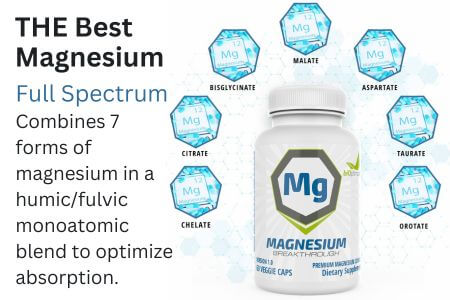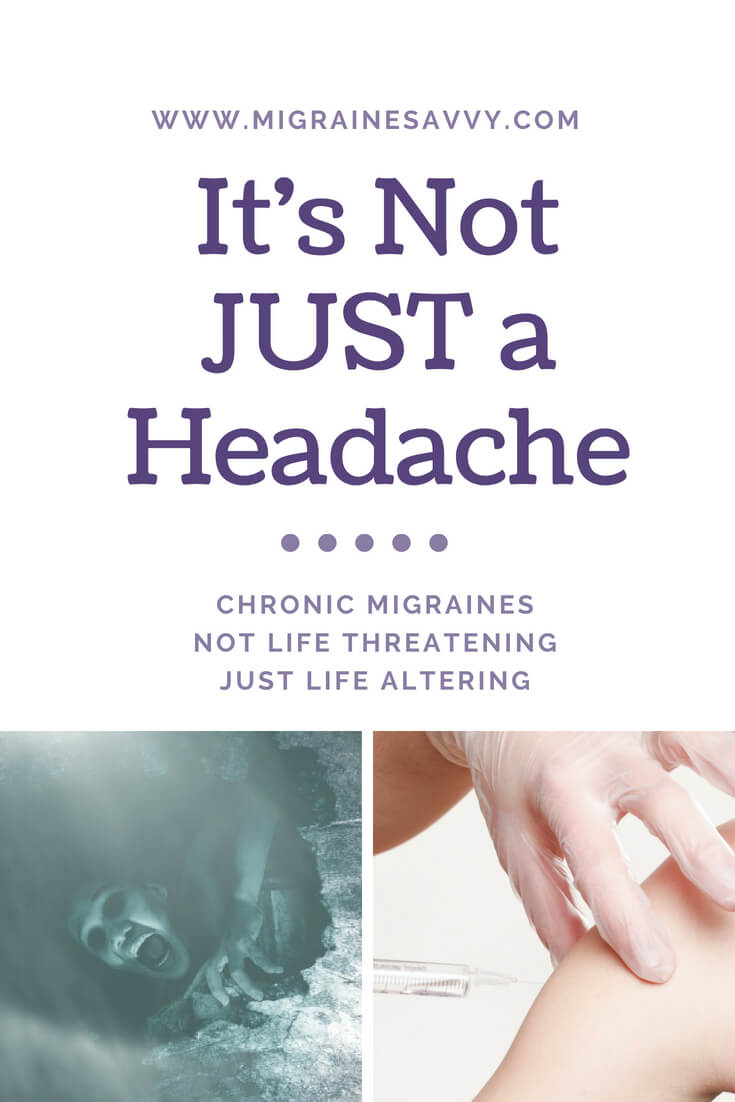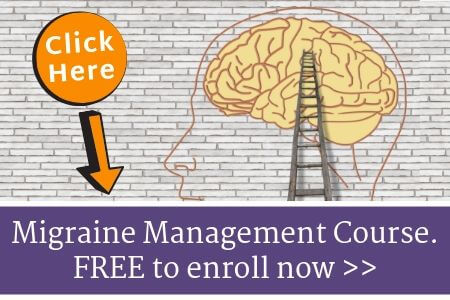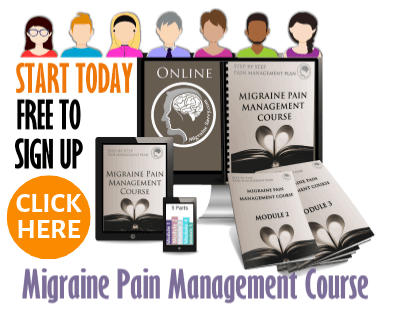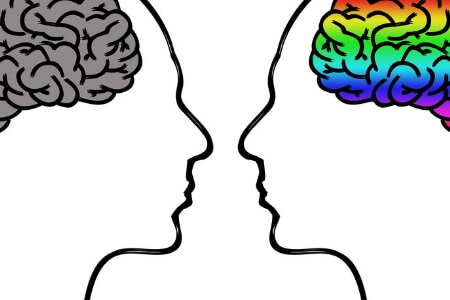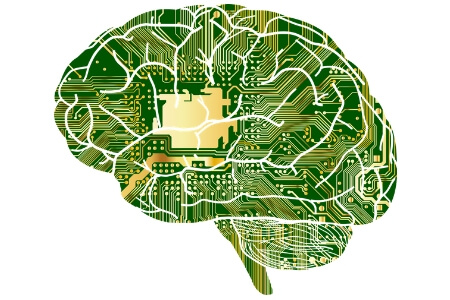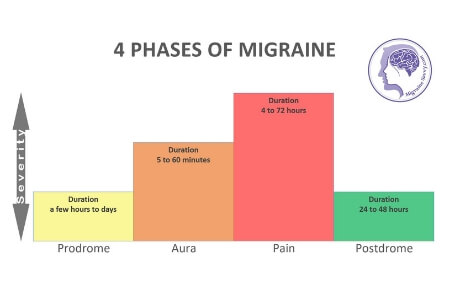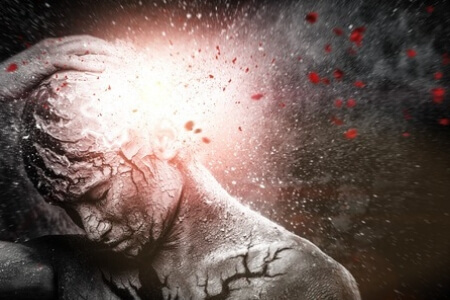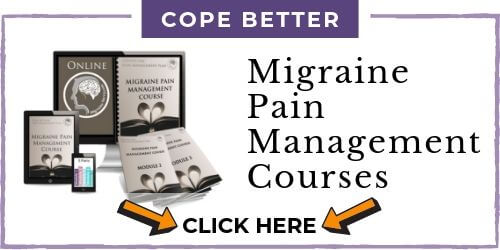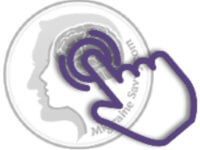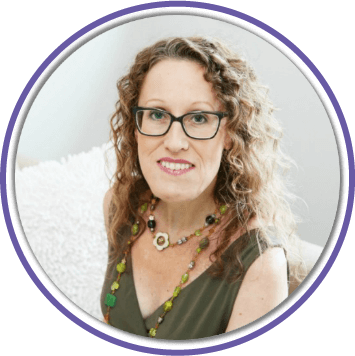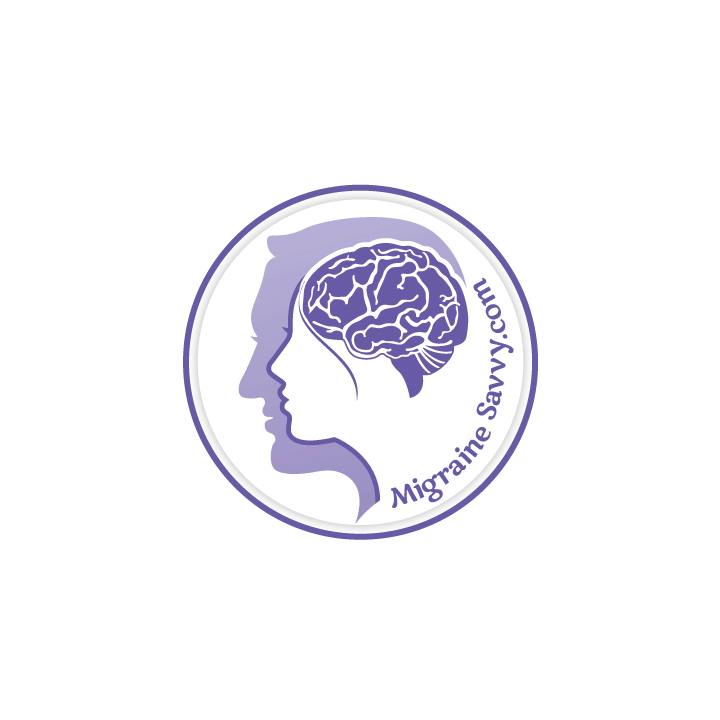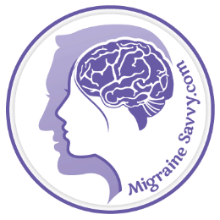- Home
- Migraine Types
- Chronic Migraines
COMPLETE MAGNESIUM SUPPORT
My Top Choice - Magnesium Breakthrough - The ONLY supplement with all 7 essential magnesium types in one formula. Most only have 1-2 types, leaving you deficient.
Chronic Migraines
Not Life Threatening, Just Life Altering!
The disability that chronic migraines cause is significantly underestimated by the medical professionals, our governments and by society. As we slowly raise awareness around migraine disease - large numbers of us do still not receive effective treatment or care for this disabling neurological disease.
Why? Why is it all so slow to change, even with all the new research and the impact of information freely available on the internet?
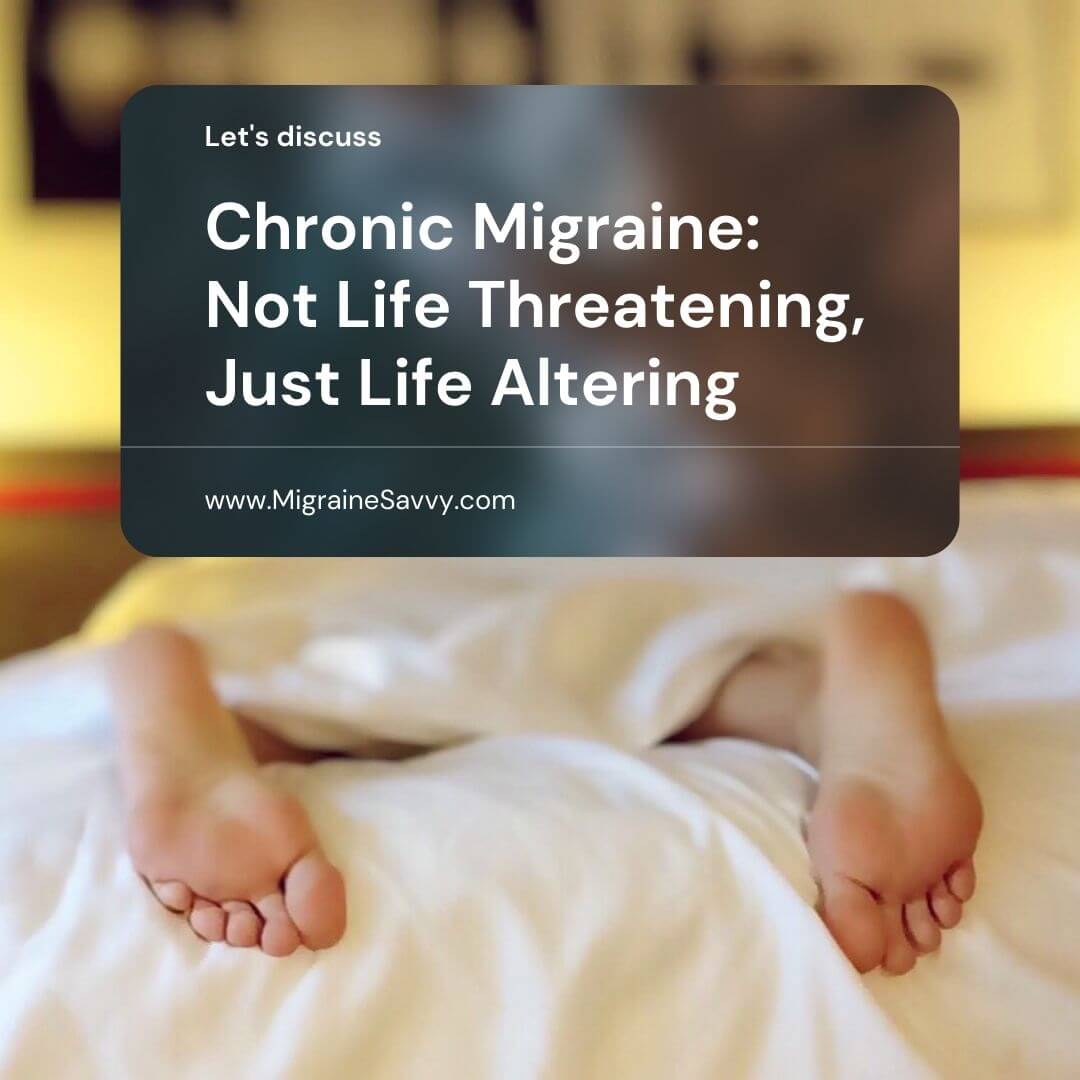
Because migraine is still stigmatized and too often dismissed as just a headache to be pushed through and ignored. "Take two aspirin and call me in the morning" kind of thing.
The whole idea of it being an actual, real neurological disorder is still misunderstood but we are lucky that so many migraine warriors (and new medications) are around fighting for us.
The Definition Of Chronic Migraine Is...
Why do people still mix up migraine and tension headaches? I certainly feel and think we migraineurs are misunderstood. For example, most women (close friends, neighbor's, teachers) forget to not wear perfume around me, even when I ask them (more than just once).
The effects of long term migraine attacks: physically, emotionally, and financially can not often be comprehended unless you are a sufferer yourself.
Have you been forced to leave the work you love and need to juggle higher medical costs with lower income?
The International Headache Society's definition of chronic migraine is:
- more than 15 headache days per month over a 3 month period of which more than 8 are migrainous
- this must be in the absence of MOH - medication overuse headache
- pain affecting one side of the head
- pulsating in quality
- moderate to severe in intensity
- aggravated by exertion
- As well as, being accompanied by nausea, with or without vomiting, and sensitivity to light, sound or smell
Episodic migraine is another migraine sub-type that is defined as less than 15 headache days per month.
My #1 Choice in Magnesium Supplements
Can I Tell You About My First Surprise Attack?
I always thought I was a late bloomer in chronic migraine headache terms. I was 32 when I had my first migraine but according to the World Health Organization (WHO) website it commonly affects people between the ages of 35 and 45 years old. (Sadly, migraines can start at any age).
Most recently research has discovered that they certainly have a genetic component. Many actions of the process surrounding the "release of pain producing inflammatory substances around the nerves and blood vessels" remain uncertain.
I can still remember my first surprise attack way back in 1992. I was having a Kit Kat bar at work and then half an hour later whamo! Vomiting and excruciating head pain, just on the right side. Then my face started to swell up. That took me by surprise. By the time I got home I could not see out of my right eye. I nearly passed out on the ferry on the way home. Or maybe I did!
Another time, I remember vomiting in a trash can on the street,
in downtown Sydney, on the way to the ferry! One of the most embarrassing
days for me as I, once again, tried to get home. I clearly recall
hanging over the side of the ferry in a VERY short business skirt. A
very kind gentleman (hopefully!) offered to hold me so as not to fall
over board. Now I can laugh, but then I was ashamed. So ashamed.

No! It's Not JUST a Headache :-(
World Health Organization (WHO) rates chronic migraine headache as a leading cause of disability worldwide.
15-18% of women, 6-8% of men, and 2% of children suffer from migraine headaches.
WHO also states the chronic migraine “headache has been and continues to be underestimated in scope and scale, and headache disorders remain under-recognized and under-treated throughout the world.”
Chronic Migraines are an isolating condition for which there is no cure. Science has been studying the causes of migraine headaches for many years and the theories have evolved from drilling holes in skulls (yes – we did that barbaric procedure to help stop the pain!), to vascular, to an over reactive nervous system disorder, and now to a brain disorder.
Finding genetic components like the TRESK gene mutation, means more targeted migraine treatment... effective migraine treatment.
You might like to read what causes migraines for more details on the Tresk gene.
Chronic migraine headaches are a leading cause of disability worldwide.
Be Aware... Your Patterns Can Change Over Time
My migraines have gotten less intense, and I no longer am convinced I am going to die with each attack.
After over 25 years, I finally know I will make it through yet another episode.
The patterns have changed unpredictably over the years which I hope have gifted me with more patience!
Some are left sided, and some are right sided. Some come up my neck and some start in my eyes. Some make me angry and some make me cry. Some still make my face swell up just on one side. It's never exactly the same either with my emotional state. Sometimes I managed and sometimes I fell apart.
And then... there was a 7 year period of cluster headaches. That was unbearable. And they shifted.
So hang in there, and persevere. Choices, small choices, you make now may have a huge impact on your health and well-being and your nasty migraines.
Do You Want To Prevent Your Chronic Migraines?
Dumb question... of course you do! Besides finding a triptan or new CGRP that works for you as a migraine abortive, biofeedback training is now widely recommended to aid in the prevention of migraine attacks. There are also some excellent electric devices and treatments now to help prevent attacks:
There are some migraine supplements with good evidence behind them for migraine prevention and getting regular exercise is proven to help reduce attacks.
It's good to cover all your bases - body, mind and spirit.
Educating yourself is essential. Here's a link to my course... the first module is FREE!
So many years, so many doctors! I would hate to add up how much money I have had to spend on my health just to maintain average. So take advantage of my personal experience and professional counselling skills and check out my course for free. Module one is packed with essential information.
Here's One More Powerful Way To Lift Your Spirits
As a qualified counselor, I can't help but include ways to deal with the emotional impact and the toll chronic migraines can take on us.
Starting a gratitude journal and or practice is proven to lift your mood. It helps to remember to feel gratitude. I am grateful that migraines have slowed down my life enough to see what is really important. To see what friends have been able to stand by my side so to speak, and who and what I now choose to surround myself with.
It can give you a chance to think about what work you are now able to do within the limits of this condition and still feel fulfilled, happy and loving. I feel I have actually become a much more compassionate human being because of this challenge in my life. More considerate of others, more patient... and more kind and gentle to myself.
It brings to mind this wonderful quote:
“People are often unreasonable and self-centered.
Forgive them anyway.
If you are kind, people may accuse you of ulterior motives.
Be kind anyway.
If you are honest, people may cheat you.
Be honest anyway.
If you find happiness, people may be jealous.
Be happy anyway.
The good you do today may be forgotten tomorrow.
Do good anyway.
Give the world the best you have and it may never be enough.
Give your best anyway.
For you see, in the end, it is between you and God.
It was never between you and them anyway.”
~ Mother Teresa
What TO DO If They Do Get Life Threatening?
Depression and anxiety are commonly comorbid conditions with migraine... and there's a higher prevalence of suicide with migraine disease.
Another way to lift your spirits is to talk to someone about it. A professional is best for anxiety and all your deep, dark fears that can come with this condition. If you are really struggling right now... if you feel like this is life threatening, please get some extra support. Here are some ways to get support right now:
In Australia - Phone
- Lifeline 13 11 14 (24/7)
- Mensline 1300 789 978
- Kids Helpline 1800 551 800
- Beyondblue 1300 224 636
Ways I Can Help
Your doctor will be a good resource too, in fact, s/he should be your number one resource! So book in asap to get an appointment. Don't suffer one more minute longer than you have to. Get help... don't wait until they get worse. Untreated attacks can turn chronic, and then it's even harder to tame them.
Until next time, take care,
Holly
WANT MORE TIPS? Subscribe to my newsletter and follow along on Facebook and Pinterest for all of the latest updates.
MIGRAINE TYPES Related Articles
How to be more MIGRAINE SAVVY right now...
Comments On Chronic Migraines
What about me? I'm not in your stats! We need updated statistics. ~ Tom F .
This is a good reference tool. I have suffered with chronic migraine most of my life. I was first officially diagnosed age 13, but found out from my living mother that I most likely had earlier as the symptoms were always present. I did discover later in life (past 10 years) that for me, 99.99% chance of being genetic because of research of family history.
So how have I learned to live my life with chronic migraine disease? I just accept the beast and try my best to get through every minute of the day.
I can say that at nearly age 50, living half my life with the beast is accepting it. My "normal" life compared to someone who doesn’t have a single headache, is my normal life of living with the beast, just like it would be with someone born and living with a handicap, MS, asthma, etc.
What is important is for the public to accept migraine as a disease and disability and all chronic migraineurs the ability to claim as a disability. For the many years, the big shots that run the world haven’t done that. It almost seemed that when Michelle Obama was in office, she would have pushed for more support and making this happen as she too lives a life with migraine.
Also, the statistics of men vs women with migraine has never been updated. There are more men who have served in combat, impact zones, who suffer a great deal and being treated by the VA, me included. The ratio of combat soldiers is very high, and this percentage never gets factored into the worldwide percentage. I think that percentage of 70% women, 20% men, and 10% children is exaggerated and should be more balanced of 55% women, 40% men, and 5% children but those men don’t always seek medical attention or support.
One horrific migraine that turned into a stroke... I say they are life threatening. ~ Bec B.
This misinformation and ignorance around chronic migraines shouldn’t be perpetuated. Where are the statistics that show the amount of migraines that lead to stroke?
To say it’s not life threatening is not true enough… is it?
For instance, being stabbed with a knife would be considered life threatening but really isn’t always.
Using language that backs up this thinking just increases the belief that migraines aren’t serious or deadly.
After a horrendous 3-week migraine, I suffered a stroke with a 20% survival rate. For the 3 weeks that link was ignored after being in and out of hospital, even 3 days after the stroke they told me it was a hemiplegic migraine. I’m now half paralyzed.
